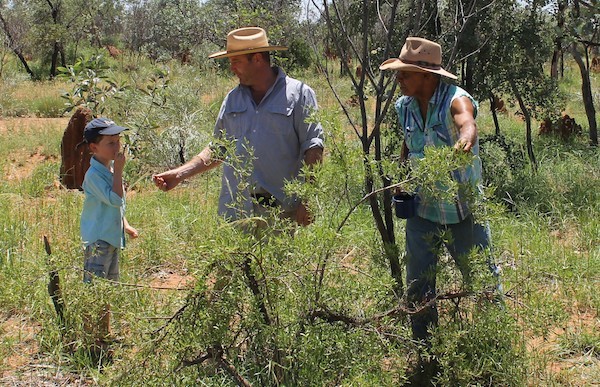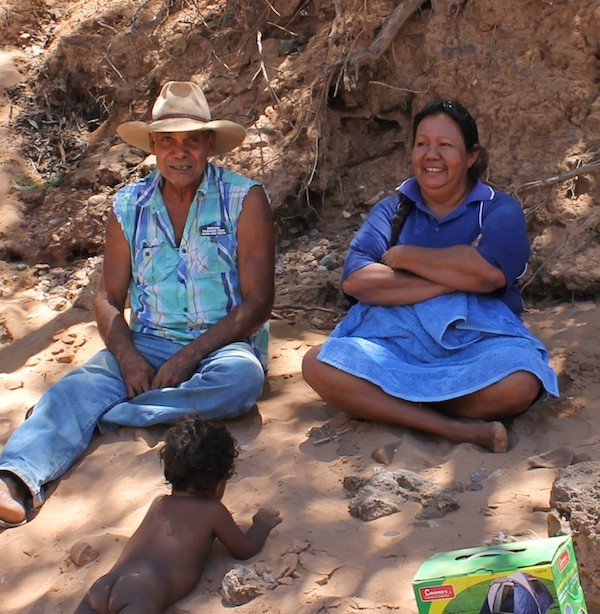Working with our Indigenous neighbours
Host: Yougawalla Station
Written by: Haydn Sale – Manager, Yougawalla Pastoral Company.
My name is Haydn Sale from Yougawalla Station and my story today is about the commercial and social relationships we have forged with our Indigenous neighbours since moving to Yougawalla.
Yougawalla Station is bordered on two sides by aboriginal owned stations. One is Carranya Station, owned by the Indigenous Land Council and the other is Bohemia Downs Station, owned by the Bohemia Downs aboriginal Pastoral Corporation and run by Doodie (Alan) and Selena Lawford for the local Bohemia community of around 35 people. Jane will be doing a story on Doodie and Selena later in the week.
It has always frustrated me to see, in most cases, productive land not being utilised and effectively going to waste, as well as aboriginal communities living on this land having no work and no part in the production process. Due to a number of reasons many aboriginal owned stations have fallen into a state of neglect or are just operating on not much more than a self sufficiency basis.
Bohemia Downs is a more developed station and was operating commercially due mainly to the toils of Doodie and Selena but still struggled financially due to lack of scale and ongoing funding and operating expense issues. I had got to know Doodie over a few years and respected him as a cattleman and a person.
During the immediate aftermath of the suspension of live exports to Indonesia and the resultant reduction in trade that followed we found ourselves in a very precarious situation. Being so remote from the rest of Australia in the Kimberly’s we had very little option to sell our cattle elsewhere due to the logistics of transport over massive distances (2,750km to our nearest abattoir in the south).
Financially this was a disaster as our revenue to run our business, pay our staff, pay our suppliers, etc dried up overnight. I think of greater concern to us was the immediate future for our livestock. Every year we need to sell animals to get them off the station to make room for the calves that have been born the year before. If we do not do this we are immediately overstocked and quickly run out of grass to feed our cattle. With everyone else in the vicinity in the same boat we were facing a potential animal welfare disaster.
Looking over the fence to the neighbouring aboriginal stations that were understocked due to the relatively low numbers of cattle on them, I thought there has to be a solution here somewhere. Due to the financial circumstances we were in, we were going to be struggling to pay an outright agistment fee to run cattle on these properties and also quite often money has to be spent on the stations to bring fencing and waters up to scratch to run the cattle. In nearly all cases the aboriginal stations did not have the funds to do this, so are left in a catch 22 situation.
We decided to approach Doodie and Selena about an agistment deal to run cattle on Bohemia Downs where by Yougawalla can provide services to help run their station in lieu of agistment. These include mustering, grading, providing fencing material and steel for yards, bulldozer or loader for cleaning out dams, trucks to transport cattle around the property and so on. This would allow Bohemia to rid itself of its major costs and turn its cattle operation into a profitable one and at the same time allow us to utilise machinery, labour and materials we already had to offset our agistment.
With a great leap of faith from Doodie and Selena three years ago, they have been able to survive the cattle downturn and go ahead with their business and we have been able to ride out the storm with extra space for our cattle over the last few years. We have also forged a great friendship between our families over the same period.
 Doodie Showing Gus where to find Konkerberries.
Doodie Showing Gus where to find Konkerberries.
On the back of this Doodie has introduced us to the Elders in charge at Louisa Downs Station that borders our property called Margaret River Station. Last year we were able to strike a similar deal to run cattle on Louisa Downs Station and have already seen new infrastructure go into the property and the start of the economic recovery of the station. There are certainly bumps in the road and difficulties that need to be worked out but I firmly believe both us and the local communities that own the stations are getting a great benefit from these arrangements.
I find it very satisfying to see young people excited about going back to work and seeing some pride in the stations coming back. While not all people stick it out there is at least now the opportunity there for them and some I am sure will go on to be a success. In time financially the communities will benefit from the renewed cash flow for community projects but most importantly I believe there will be opportunity and a chance for work there for them if they choose to take it.
 Doodie Holding the Floor at a Community Meeting.
Doodie Holding the Floor at a Community Meeting.
We have found aboriginal stockmen and women to be very good, with a natural sense for working and handling cattle. They are also proud of their history in the pastoral industry and its development and in some small way we are extremely proud to be helping to revive this. We are also very fortunate to have the opportunity to run cattle on these properties as without them we would have struggled for survival ourselves. As some cheesy management consultant once said, it has been a win win outcome for all involved.


